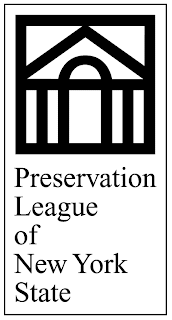 Digital technology alone will not ensure the preservation and survival of the nation’s sound history. That is one of the findings in a major study released by the Library of Congress National Recording Preservation Board (NRPB) detailing the state of sound-recording preservation and access. The study was mandated by the U.S. Congress under the “National Recording Preservation Act of 2000″- (P.L. 106-174) and is the first comprehensive study on a national level that examines the state of America’s sound-recording preservation ever conducted in the United States.
Digital technology alone will not ensure the preservation and survival of the nation’s sound history. That is one of the findings in a major study released by the Library of Congress National Recording Preservation Board (NRPB) detailing the state of sound-recording preservation and access. The study was mandated by the U.S. Congress under the “National Recording Preservation Act of 2000″- (P.L. 106-174) and is the first comprehensive study on a national level that examines the state of America’s sound-recording preservation ever conducted in the United States.
Titled “The State of Recorded Sound Preservation in the United States: A National Legacy at Risk in the Digital Age,” the study outlines the interlocking issues that now threaten the long-term survival of America’s sound-recording history. It also identifies the public and private policy issues that strongly bear on whether the nation’s most culturally and historically important sound recordings will be preserved for future generations.
Although public institutions, libraries and archives hold an estimated 46 million recordings, the study finds that major areas of America’s recorded sound heritage have already deteriorated or remain inaccessible to the public. Only an estimated 14 percent of pre-1965 commercially released recordings are currently available from rights-holders. Of music released in the United States in the 1930s, only about 10 percent of it can now be readily accessed by the public.
In his introduction to the study, Librarian of Congress James H. Billington noted: “Sound recordings have existed as one of the most salient features of America’s cultural landscape for more than 130 years. As a nation, we have good reason to be proud of our historical record of creativity in the sound-recording arts and sciences. However, our collective energy in creating and consuming sound recordings in all genres has not been matched by an equal level of interest, over the same period of time, in preserving them for posterity.”
Authored by Rob Bamberger and Sam Brylawski under the auspices of NRPB, the study points out the lack of conformity between federal and state laws, which has adversely affected the survival of pre-1972 sound recording. One of the major conclusions in the report is that the advent of digital technologies and distribution platforms has made inseparable the issues surrounding both the preservation of sound recordings and access to them.
The authors also conclude that analog recordings made more than 100 years ago are likelier to survive than digital recordings made today. In addition, the report warns that there must be a coordinated effort by the various stakeholders to address the scope of the problem, the complexity of the technical landscape, the need for preservation education and the copyright conundrum.
Finally, the report notes that newer materials such as born-digital audio are at greater risk of loss than older recordings, such as 78-rpm discs- that there is a lack of a comprehensive program to preserve born-digital audio- and that open-reel preservation tapes made in the 1970s and 1980s are deteriorating faster than older tape recordings. For more findings from the report, review the appendix at www.loc.gov/today/pr/2010/PR10-194SRstudyAppendixwithkeyfindings.pdf and the introduction/executive summary at www.loc.gov/today/pr/2010/CLIRpub148Intro.pdf.
“The State of Recorded Sound Preservation in the United States: A National Legacy at Risk in the Digital Age” is available for purchase and as a free download at www.clir.org/pubs/abstract/pub148abst.html. Information for this study was gathered through interviews, public hearings and written submissions. NRPB previously commissioned five ancillary studies in support of this final report, which will lay the groundwork for the National Recording Preservation Plan, to be developed and published later this year.
The Library of Congress Packard Campus for Audio Visual Conservation has already begun initiatives to solve some of the problems identified during preparation of the study. For example, the Recorded Sound Section of the Packard Campus has obtained a license to stream acoustical recordings controlled by the Sony Music Entertainment for the Library of Congress National Jukebox, which will debut later in 2010.
The Library of Congress Packard Campus for Audio Visual Conservation is a state-of-the-art facility funded as a gift to the nation by the Packard Humanities Institute. The Packard Campus is the site where the nation’s library acquires, preserves and provides access to the world’s largest and most comprehensive collection of motion pictures, television programs, radio broadcasts and sound recordings (www.loc.gov/avconservation/). The Packard Campus is home to more than six million collection items, including nearly three million sound recordings. It provides staff support for the Library of Congress National Film Preservation Board, the National Recording Preservation Board, and the National Registries for film and recorded sound.
Photo: Vice-President Elect Harry Truman’s family listening to election returns, 1944.







